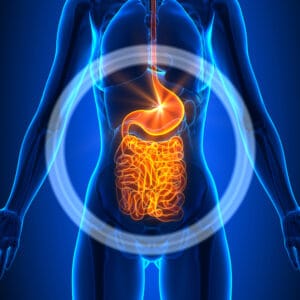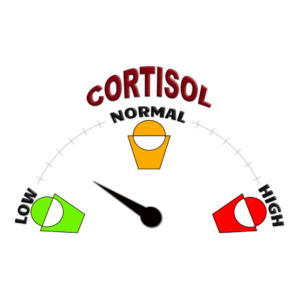Today, more than ever before, we are hearing the word “sugar” bandied about everywhere, and are being warned of the health risks associated with high intakes of it. We are told that “added” or “free” sugars are harmful; and that it is these sugars we need to cut back on because they cause our blood sugar levels to rise and then crash, contributing to health problems such as type 2 diabetes and obesity, as well as a number of other chronic illnesses.
More recently, we are being advised that fructose is the ‘baddie’ to look out for, because it is increasingly becoming associated with a new form of liver disease called non-alcoholic fatty liver disease, and heart disease. So what exactly do we mean when we talk about sugar? Which forms of it should we be avoiding and how is it harmful?
Types of sugar and World Health Organisation (WHO) recommendations
All carbohydrates are forms of sugar. They are classified into two main groups: simple and complex. Complex carbohydrates (oligosaccharides) are made up of sugar molecules strung together like a necklace. They are often rich in fibre, thus satisfying and health-promoting. They are commonly found in whole plant foods and are therefore often rich in vitamins and minerals. Simple carbohydrates are either monosaccharide (one sugar molecule) or disaccharide (two sugar molecules). They are the quickest form of energy, as they are rapidly digested. The two main monosaccharides are glucose and fructose, and the two main disaccharides are sucrose (composed of glucose and fructose) and lactose (composed of glucose and galactose).
Glucose is the primary source of fuel for our body. Every cell relies on it to function properly.
Glucose is the primary source of fuel for our body. Every cell relies on it to function properly. When we eat carbohydrates, they are broken down into glucose, and when our blood glucose levels rise, the pancreas secretes insulin to signal to the cells to take it up and use it for energy. This is a healthy response. It is only when our blood sugar levels continually fluctuate that we are at risk of insulin resistance.
Fructose naturally occurs in fruit, certain vegetables, honey, sucrose and high corn fructose syrup. Unlike glucose, it is metabolised in the liver, and therefore too much of it can damage liver function. Sucrose is the white sugar produced by the sugar cane plant. It is made up of 50% glucose and 50% fructose, meaning that the fructose portion of it is metabolised in the liver, and the glucose content leads to an elevation in blood glucose. Lactose is a sugar found in milk. It is made up of glucose and galactose, and is broken down by an enzyme called lactase. Once broken down, the simple sugars are absorbed into the bloodstream.
The Food and Drug Administration (FDA) defines sugars as “the sum of all free mono and disaccharides”, which would include glucose, fructose, galactose, lactose, sucrose and maltose (a disaccharide composed of two units of glucose). It defines “added sugar” as “sugars and syrups that are added to foods during processing or preparation”, excluding those sugars naturally found in foods such as fruits and dairy products. 1 The World Health Organisation (WHO) uses the term “free sugar”, rather than “added sugar”, in its recommendations. “Free sugar” includes added sugars, as well as those naturally present in fruit juices and fruit concentrates. 2
According to the WHO, increased consumption of “free sugar” is associated with weight gain in children and adults, as well as preventable mortality from diabetes, cardiovascular disease and cancer. 3-4 It maintains that while sugars are found naturally in many foods, the addition of sugars to food products adds to calorie content, which contributes to problems with becoming overweight, obesity, type 2 diabetes and other inflammatory-driven chronic illnesses. 5 For these reasons, the new recommendations are that only 5% of our daily calorie intake should come from “free sugar”. This equates to 25g (5-6 teaspoons) for women, 35g (7-8 teaspoons) for men, 19g (5 teaspoons) for children aged 4-6 years old, and 24g (6 teaspoons) for 7-11 year olds.
Only 5% of our daily calorie intake should come from “free sugar”. This equates to 25g (5-6 teaspoons) for women and 35g (7-8 teaspoons) for men.
Fructose, non-alcoholic fatty liver disease and heart disease
Dr Robert H Lustig, a professor of paediatrics and an obesity specialist at the University of California, San Fransisco, warns in his article “Is Sugar Toxic?” that the real villain when it comes to the impact of sugar on health, is fructose. 6 He points out that in the 1800s and 1900s, the average American took in 15g of fructose a day, mostly from fruit and vegetables. Today the average American takes in 55g per day (72g for adolescents). The increase in fructose, according to Lustig, parallels with increases in diabetes and non-alcoholic fatty liver disease. 6
Lustig argues that whereas every cell in the body can use glucose for energy, only liver cells break down fructose. 6 One of the end products of this break down is triglyceride, a form of fat, which can build up and damage liver function and, once released into the bloodstream, contribute to the growth of fat-filled plaque inside artery walls. 6 Another end product is uric acid. Elevated levels can lead to chronic low-grade inflammation, which has far-reaching implications for health – in particular, obesity, heart disease, stroke and kidney disease. In addition, Lustig argues, the effect of high fructose intake is insulin resistance, a precursor to diabetes. 6
In the 1800s and 1900s, the average American took in 15g of fructose a day, mostly from fruit and vegetables. Today the average American takes in 55g per day (72g for adolescents).
What about fructose in fruit? Joseph Mercola, in his article “Sugar: Eliminate this ONE ingredient and watch your health soar” 7 recommends that because most people eat processed foods and sweetened drinks that contain “free sugar”, they should limit their fructose intake from fruit to 15g per day. See his chart here for a list of some of the most common fruits and their fructose gram content.
My advice to people is to keep eating fruit, which is nutrient-dense and packed full of fibre and antioxidants, and to focus rather on cutting out or drastically reducing the “free sugars” typically found in refined carbohydrates such as white bread, pasta, cakes, sweets, chocolates, sweetened drinks, and other processed foods that form the basis of the Standard American Diet. It is these foods that are laden with “free sugars”, which by virtue of its definition includes fructose, and it is our overconsumption of them that is causing us to become over-fed, malnourished and sick.
Nutrition labels and sugar
Nutrition labels often tell you how much total sugar a food contains, but they don’t tell you the amount of “free sugars”. You can compare labels and choose foods that are lower in total sugars. “Total sugars” describes the total amount of sugars from all sources (“free sugars” plus those naturally occurring in the structure of foods such as milk, fruit and vegetables).
A plain yoghurt, for example, may contain 9.9g total sugars but none of these are “free sugars” as they all come from milk. The same applies to an individual portion of fruit. This means that a food containing lots of fruit or milk will be a healthier choice than one that contains lots of “free sugars”, even if the two products contain the same amount of total sugars. You can tell if the food contains lots of added sugar by checking the ingredients list. Added sugars must be included in the ingredients list, which always starts with the biggest ingredient. This means if you see sugar near the top, the food is likely to be high in added sugars.
Watch out for other words used to describe added sugars such as cane sugar, honey, brown sugar, high corn fructose syrup, fruit juice concentrate, corn syrup, fructose, sucrose, glucose, crystalline sucrose, and nectars.
A helpful tool to find out how much total sugar is in your everyday food and drink is the change4life Sugar Smart app. Just scan the barcode on a product to see how much sugar it contains.
REFERENCES:
- Dept of Health and Human Services Food labelling: Revision of the Nutrition and Supplement Facts Labels federal Register (2014) 79: 11880-11987;
- World Health Organisation: Guideline: Sugars Intake for Adults and Children. WHO; Geneva, Switzerland 2015 1-49;
- Te Morenga L, Mallard S, Mann J (2013) Dietary sugars and body weight: systematic review and meta-analyses of randomized controlled trials and cohort studies: British Medical Journal 346:e7492;
- Malik V, pan A, de Koning L, Schernhammer E, Willett W, Hu F (2014) Abstract MP 49: sugar sweetened and artificially sweetened beverages and risk of mortality in US adults. Circulation 129:AMP 49;
- Bachman C, Baranowski t, Nicklas T: Is there an association between sweetened beverages and adiposity? Nutrition Reviews (2006) 64(4) 153-174;
- nytimes.com/2011/04/17/magazine/mag-17Sugar-t.html;
- mercola.com “Sugar: eliminate this ONE ingredient and watch your health soar“, May 02.2011








